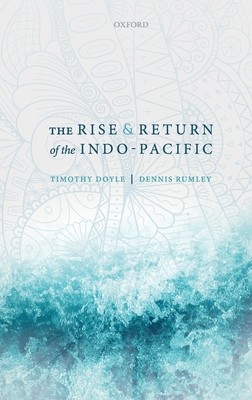
- We will send in 10–14 business days.
- Author: Timothy Doyle
- Publisher: Oxford University Press, USA
- ISBN-10: 0198739524
- ISBN-13: 9780198739524
- Format: 15.5 x 23.6 x 2.3 cm, kieti viršeliai
- Language: English
- SAVE -10% with code: EXTRA
Reviews
Description
In the 21st century, the Indo-Pacific region has become the new centre of the world. The concept of the 'Indo-Pacific', though still under construction, is a potentially 'pivotal' site, where various institutions and intellectuals of statecraft are seeking common ground on which to anchor new regional coalitions, alliances. and allies to better serve their respective national agendas. This book explores the 'Indo-Pacific' as an ambiguous and hotly contested regional security construction. It critically examines the major drivers behind the revival of classical geopolitical concepts and their deployment through different national lenses. The book also analyses the presence of India and the U.S in the Indo-Pacific, and the manner in which China has reacted to their positions in the Indo-Pacific to date. It suggests that national constructions of the Indo-Pacific region are more informed by domestic political realities, anti-Chinese bigotries, distinctive properties of 21st century
U.S hegemony, and narrow nation-statist sentiments rather than genuine pan-regional aspirations.
the most dominant nation -in this case, the U.S- as it grapples with new ways of retaining its hegemony into the 21st century.
EXTRA 10 % discount with code: EXTRA
The promotion ends in 22d.21:15:41
The discount code is valid when purchasing from 10 €. Discounts do not stack.
- Author: Timothy Doyle
- Publisher: Oxford University Press, USA
- ISBN-10: 0198739524
- ISBN-13: 9780198739524
- Format: 15.5 x 23.6 x 2.3 cm, kieti viršeliai
- Language: English English
In the 21st century, the Indo-Pacific region has become the new centre of the world. The concept of the 'Indo-Pacific', though still under construction, is a potentially 'pivotal' site, where various institutions and intellectuals of statecraft are seeking common ground on which to anchor new regional coalitions, alliances. and allies to better serve their respective national agendas. This book explores the 'Indo-Pacific' as an ambiguous and hotly contested regional security construction. It critically examines the major drivers behind the revival of classical geopolitical concepts and their deployment through different national lenses. The book also analyses the presence of India and the U.S in the Indo-Pacific, and the manner in which China has reacted to their positions in the Indo-Pacific to date. It suggests that national constructions of the Indo-Pacific region are more informed by domestic political realities, anti-Chinese bigotries, distinctive properties of 21st century
U.S hegemony, and narrow nation-statist sentiments rather than genuine pan-regional aspirations.
the most dominant nation -in this case, the U.S- as it grapples with new ways of retaining its hegemony into the 21st century.


Reviews